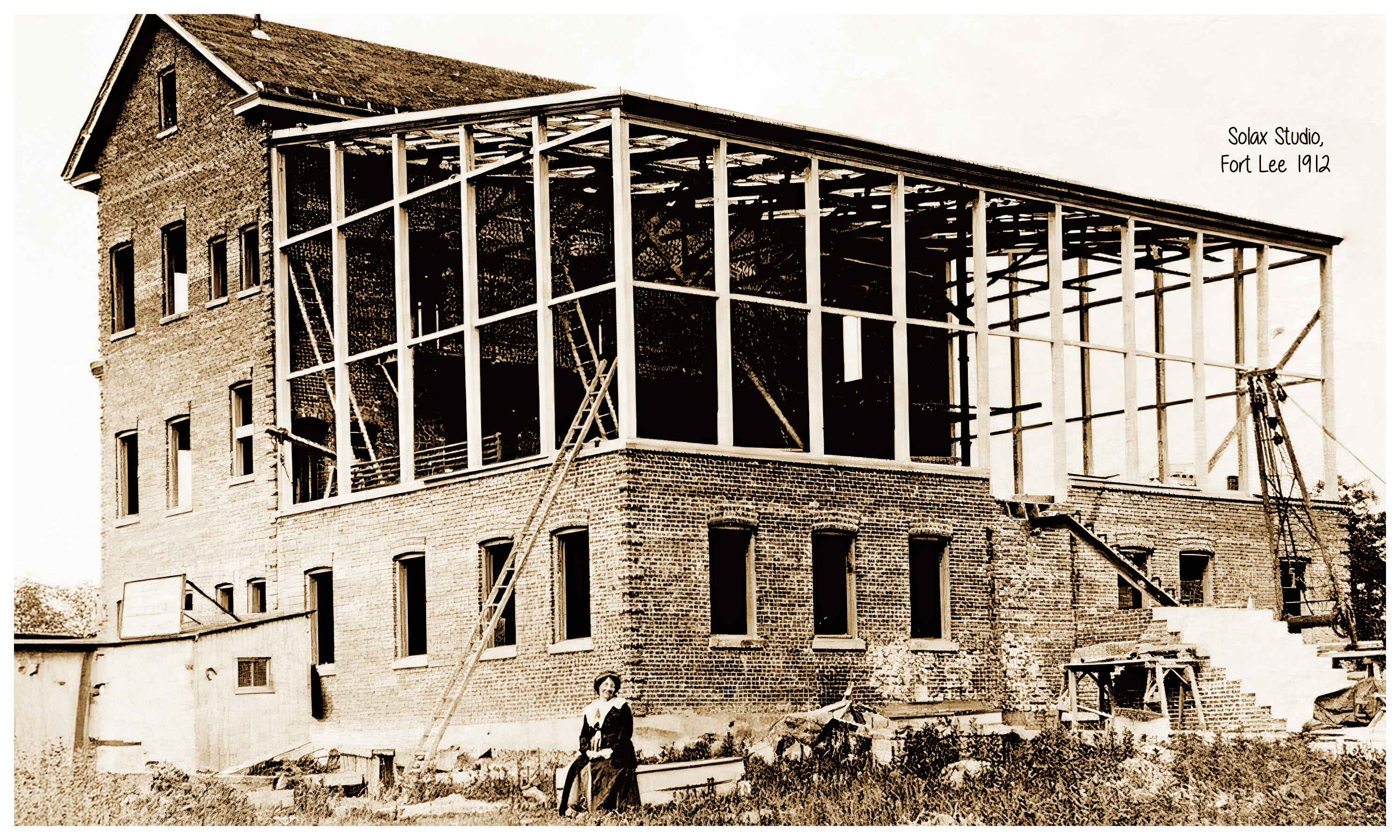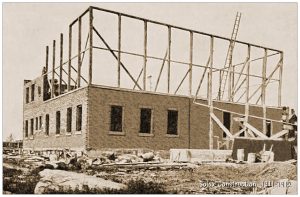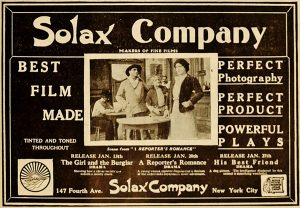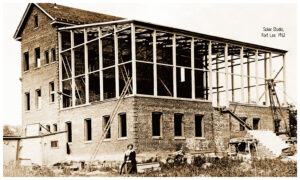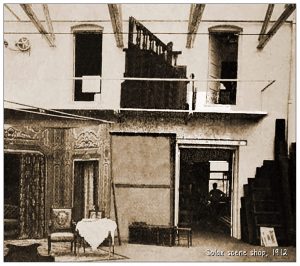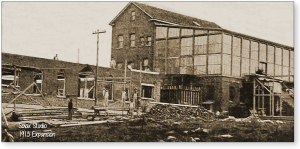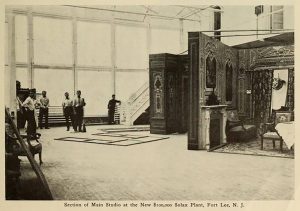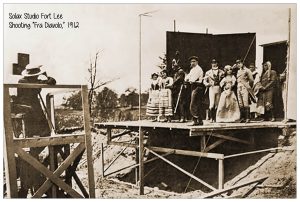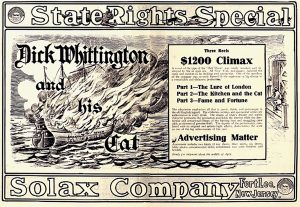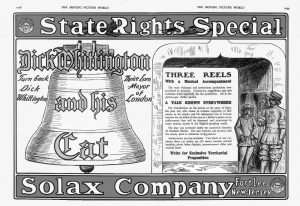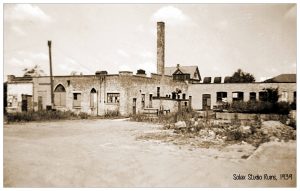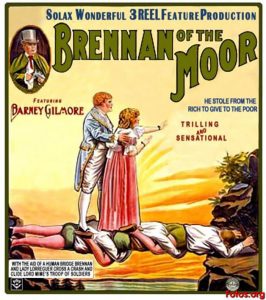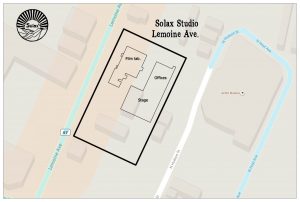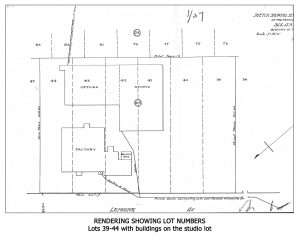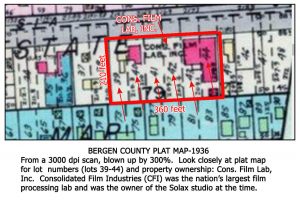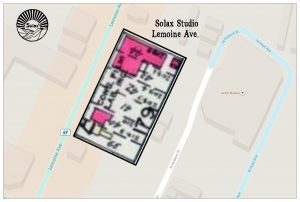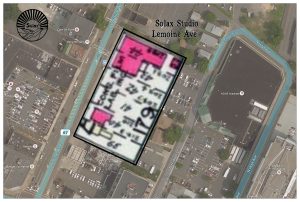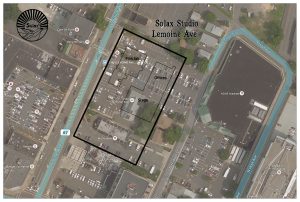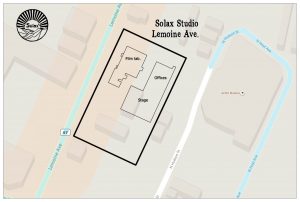Solax Company
The Studio Owned by the Very First Female Mogul
Click to enlarge
Related Pages:
Click to enlarge

Solax Company
Lemoine St., Fort Lee
Active 1910-1929
Solax's position in movie studio history is unique. One of its owners, Alice Guy-Blaché , was the first female studio owner and producer. Ms. Guy-Blaché rose from the steno pool to manage studios for Gaumont, a large French production company, to finally own her own along with her husband, Herbert. Ms. Guy-Blaché fell out of movie history until a recent documentary on her life put her where she belongs, on the front page of history.
Solax was one of the largest of the movie studios in Fort Lee at the beginning of the 20th Century. It was located on Lemoine Ave. 150 feet south of what would later be Fort Lee High School to just north of what would be the George Washington Bridge. It extended 360 feet along Lemoine and was 210 feet deep and sits on what is now the Acme Supermarket parking lot (see maps).
Solax was founded in 1910 by Herbert Blaché and Alice Guy-Blaché , though Alice was the real driving force behind the company. The Blachés relocated to New York from France to oversee the construction and management of Gaumont's Flushing, New York studio. Their Solax company was actually the first tenant of the Gaumont Studio.
Solax worked out of the Gaumont's studio in Flushing until the Blachés bought land in Fort Lee on November 21, 1911 (land was purchased in the name of New Jersey Studio Company). In early 1912 the first building was completed and extensive gardens were planted to accommodate outdoor shooting. It was the largest and most sophisticated studio in the United States at the time. The studio measured 62 feet on each side. Offices and dressing rooms on the lower floors, a glass stage on the second floor. Additional construction produced a laboratory and other small offices. Solax produced an average of two short films every week.
Alice directed the pictures and managed the day-to-day operations while Herbert managed Gaumont's New York studio in Flushing.
Alice was a true pioneer of movie production, being the first female producer/director to achieve fame and success. She was one of the first producers to film actual stories, and invented the art of the director. She experimented with sound and color (frame by frame tinting) wrote scenarios for her actors to follow instead of making up as they went along.
In 1913 Herbert cut ties with Gaumont and formed Solax based Blaché Features for producing feature length films (at the time Solax was producing one-reelers of about 10 minutes). Solax, as a production company ceased production and Herbert and Alice alternated directing features for the Blaché Company.
1913 also saw an expansion of the studio adding buildings and outdoor stages, doubling their production capacity (they could turn out 200,000 feet of positive film a week).
In 1914 the Blachés formed a new company, the United States Amusement Corporation for the production of "large, pretentious feature photodramas." They brought on additional directors to help. Herbert was the CEO of this new company, and Alice remained the president of the Solax Studio. This now meant that the Blaché family ran three distinct companies from the one studio. New facilities were again built, and old ones remodeled into dressing rooms, offices, etc.
Alice remained the driving force behind the companies and was publicized as "the foremost woman producer of motion pictures in the world (though by the 1940s she was all but forgotten).
By 1916, even though the Blachés continued to produce features of their own, they added a profit center by renting out stages and labs to other outside production companies. They ceased their own production around 1917 finding it more profitable to rent out the facilities. Goldwyn Pictures settled in in early 1917 but left for the now larger Universal plant in April of that year. That summer the Blachés made significant improvements to the facility and Pathé moved in as a tenant. Apollo Pictures was also a 1917 tenant.
In 1918 the Blachés separated. Alice fell ill and stopped directing. Her last directorial effort was in 1918. The studio was leased to her "friend" Albert Capellani and renamed Capallani Studios. Extensive improvements were made by Capellani.
The first of two fires struck the studio on December 20, 1919, destroying the newly built film lab. The laboratory was quickly rebuilt and Lewis Selznick began a brief tenancy followed by Samuel Goldfish (Goldwyn).
After 1920 production throughout Fort Lee dropped off (most producers preferring California), but the laboratory business continued to flourish, offsetting any losses from the lack of production. In 1924 Hirlagraph Motion Picture Corporation took control, revamped the two stage buildings, and offered them for rent, but there were no takers. CFI (Herbert Yates' Consolidated Film Industries-the largest lab in America) took over the complex as their east coast branch. In September of 1929 a second fire destroyed the all the buildings, including what remained of wardrobes, sets, props, stages, labs, etc. The ruins were razed in 1930 and CFI purchased the property in 1931 and erected four brand new buildings on the site. Bonded Film Storage bought the property in 1949 and built a new film storage facility.
In 1965 what remained of the buildings were demolished to make room for a parking lot.

